Welcome to Saturday Sparks! This week, we’re exploring the colorful, fluid world of watercolor painting, a timeless art form celebrated for its versatility and charm. Using water-based pigments, artists can create everything from bold, vibrant designs to soft, delicate details. Watercolor’s layered transparency allows colors to blend and flow in ways that bring depth and life to a painting.
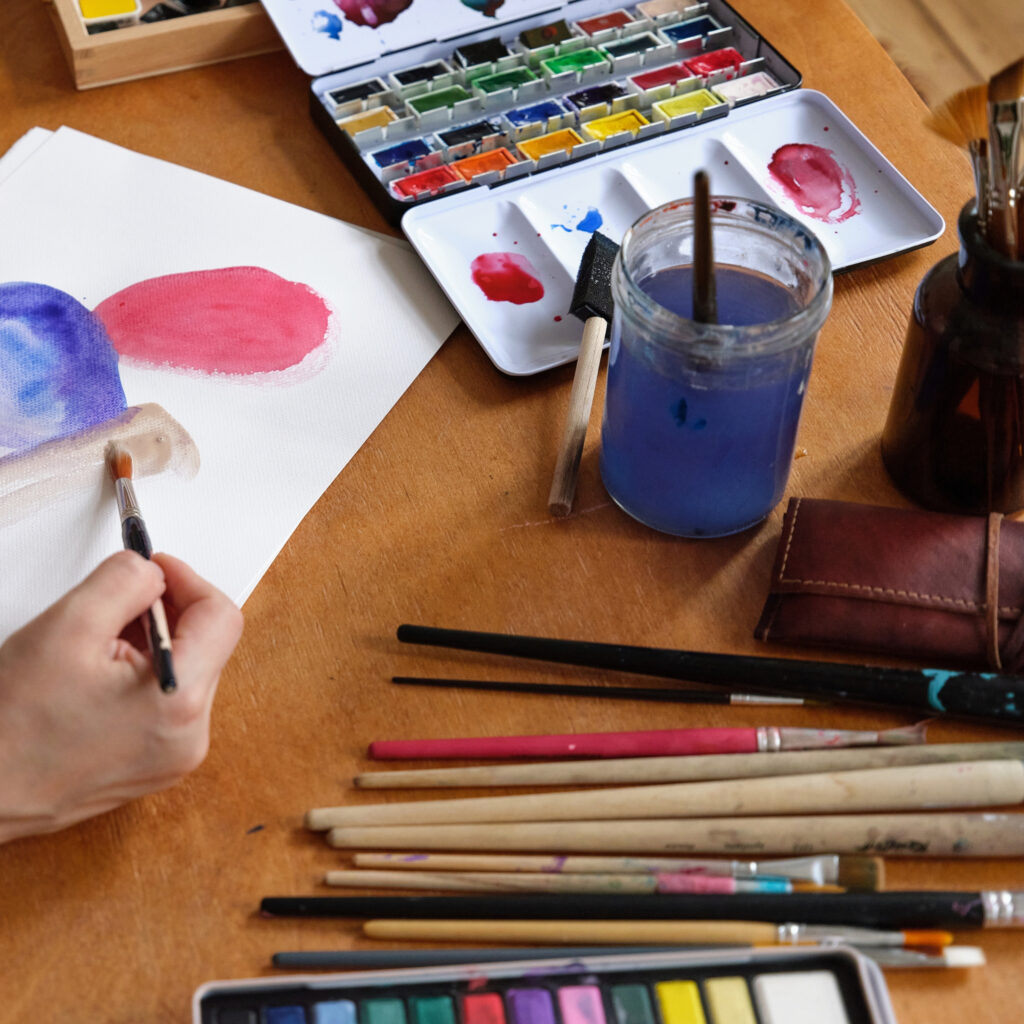
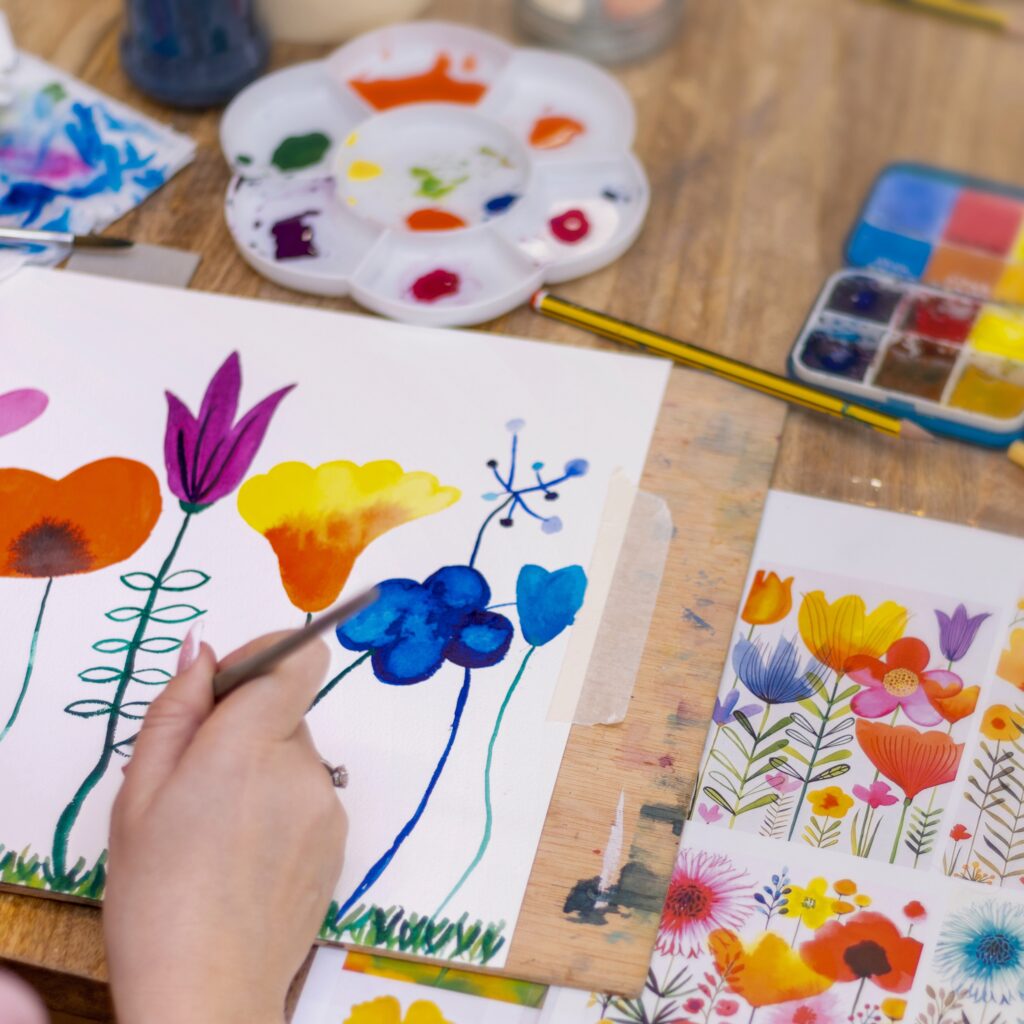
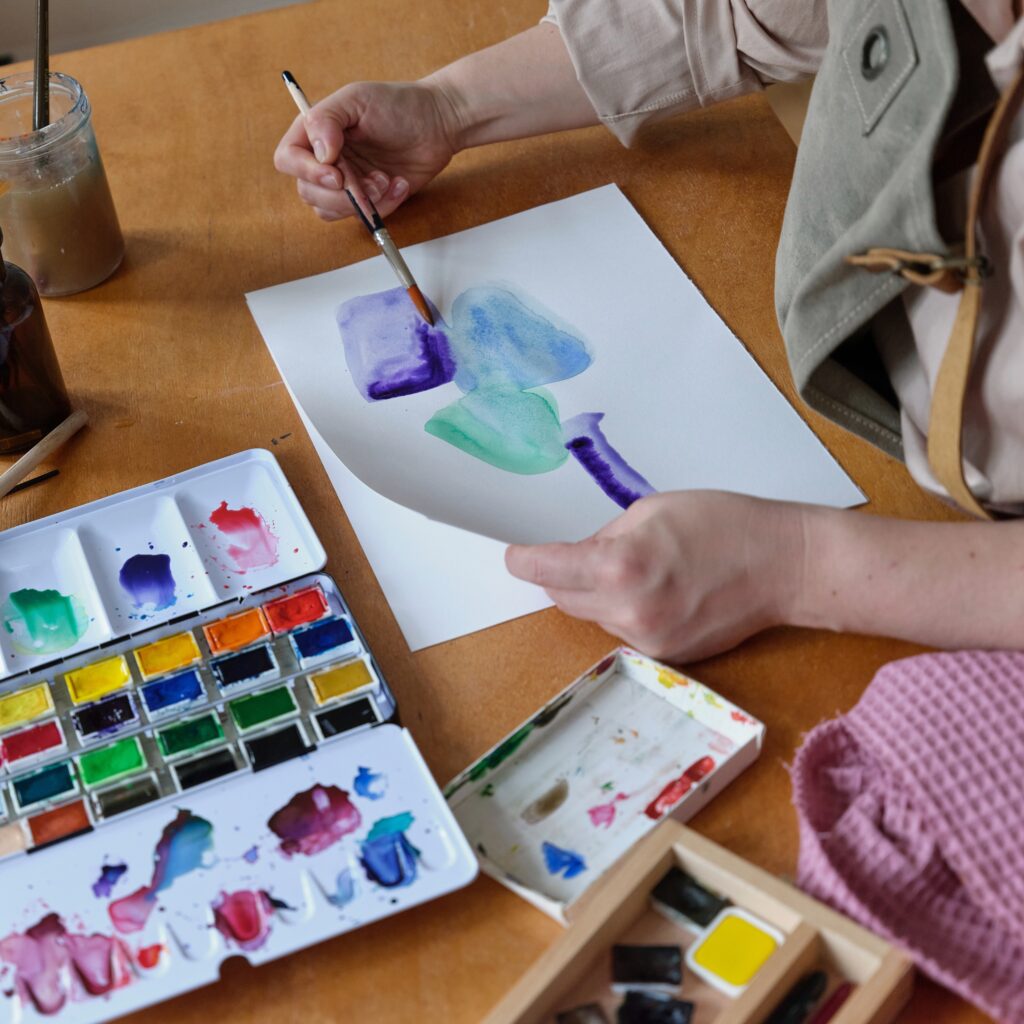
Whether you’re capturing the beauty of nature, experimenting with abstract patterns, or illustrating everyday moments, watercolor offers a relaxing and rewarding creative outlet for artists of all skill levels.
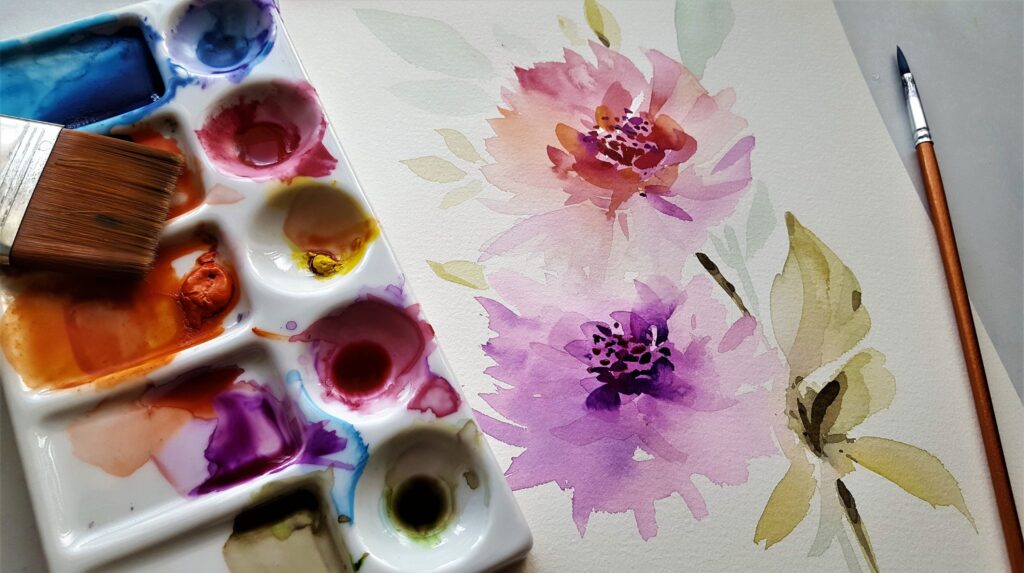
What is Watercolor Painting
Watercolor painting is a versatile medium that uses water-soluble pigments to create stunning, soft, and vibrant artworks. It’s known for its fluidity and transparency, allowing artists to create delicate layers of color that blend beautifully together.
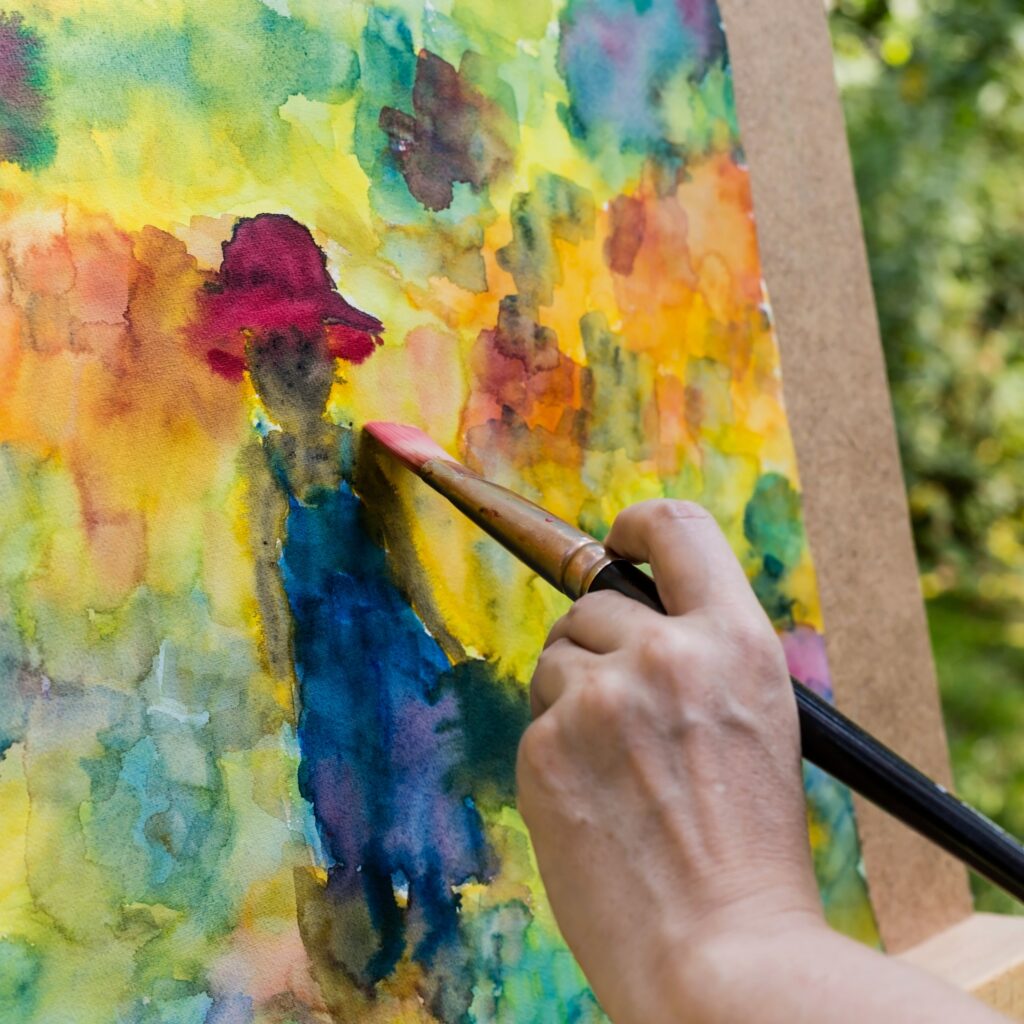
Watercolor painting is an expressive art form that uses pigments mixed with water to create soft, fluid layers of color. While most often done on watercolor paper, artists also explore other surfaces like canvas, wood, fabric, or specially prepared panels for unique textures and effects. The paint’s transparency lets light reflect through the layers, giving watercolor its signature depth and luminosity.
This medium is as adaptable as the artist using it, perfect for precise detail work, bold washes, or loose, impressionistic strokes.
With brushes, sponges, masking fluid, or unconventional tools, painters can create endless variations in texture and tone. Its portability and minimal setup make watercolor painting a favorite for both studio work and painting on location, allowing creativity to flow wherever inspiration strikes.
The Benefits of Watercolor Painting
Watercolor painting is a versatile and rewarding art form that encourages creativity and self-expression. Its fluid nature invites experimentation with techniques, colors, and textures, from bold abstract washes to detailed nature studies.
The process of blending colors, layering washes, and creating gradients deepens your understanding of color theory, composition, and the interplay of light and shadow.
It’s also a relaxing, mindful activity. The gentle brushstrokes, flowing pigment, and gradual build of color create a calming, meditative experience that can help reduce stress, improve focus, and sharpen patience.
Working with watercolor strengthens fine motor skills, hand-eye coordination, and concentration as you control the brush and wait for layers to dry.
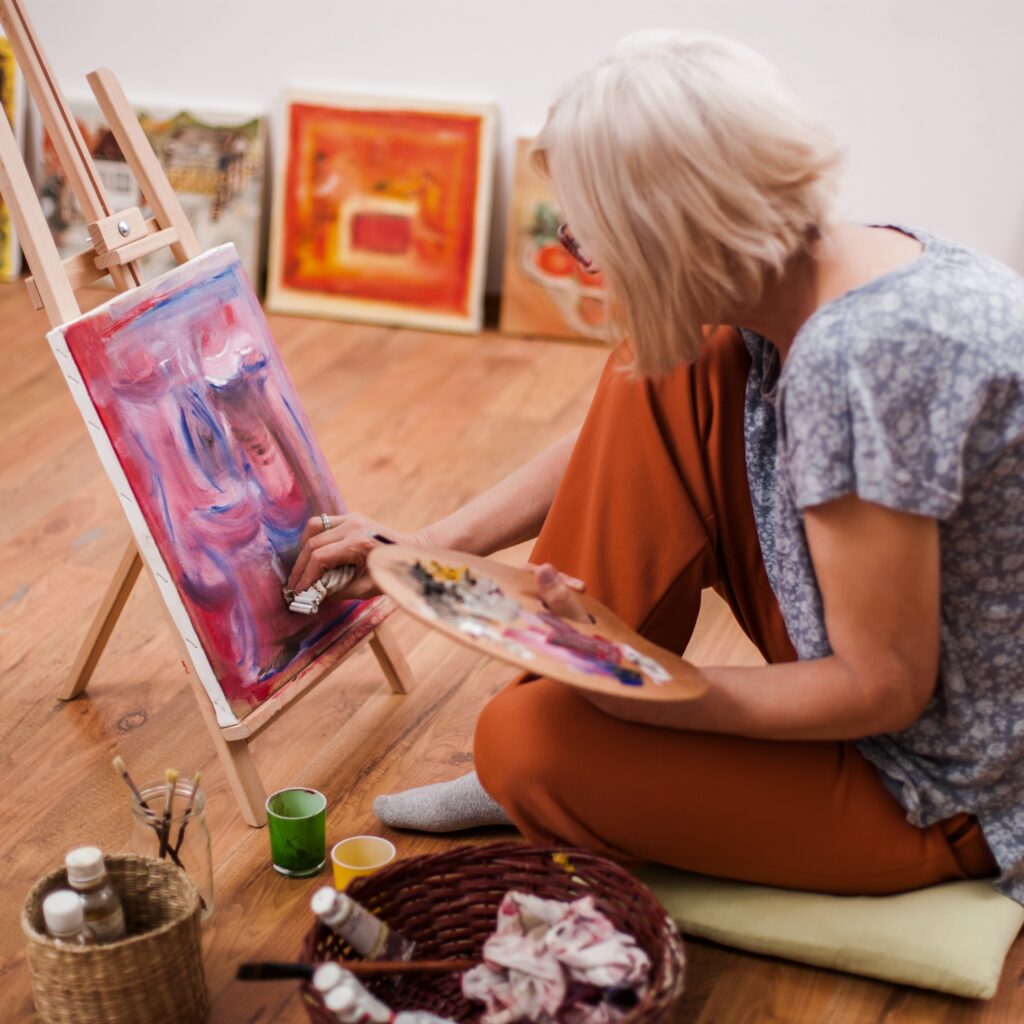
Watercolor is portable and low-maintenance, requiring only paints, brushes, water, and paper, making it easy to paint anywhere, indoors or out. It’s adaptable for all skill levels, offering beginners a forgiving medium for exploration and challenging experienced artists to master advanced effects. The unpredictable flow of watercolor also fosters problem-solving and creative thinking, teaching you to embrace unexpected results.
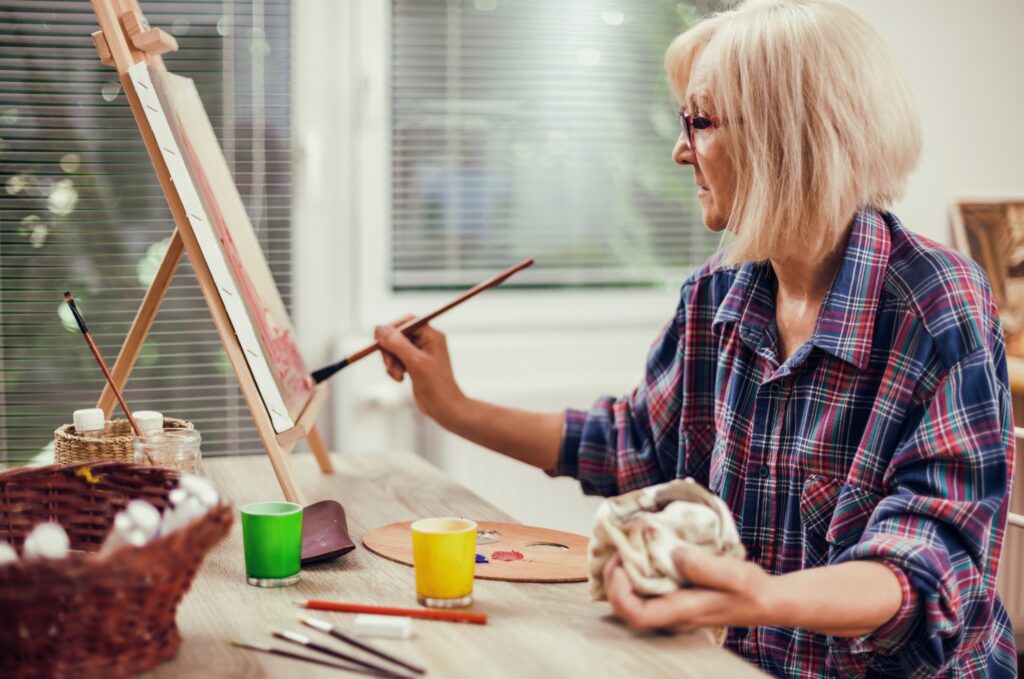
Whether painting for personal enjoyment, to display, or to give as a gift, watercolor offers endless opportunities for artistic growth, self-expression, and joy.
Getting Started
If you are new to watercolor painting, getting started is simple and doesn’t require a large investment in supplies. Begin with a basic watercolor set, a few brushes in varying sizes, a palette, and a container of water. These essentials are all you need to start exploring the medium.
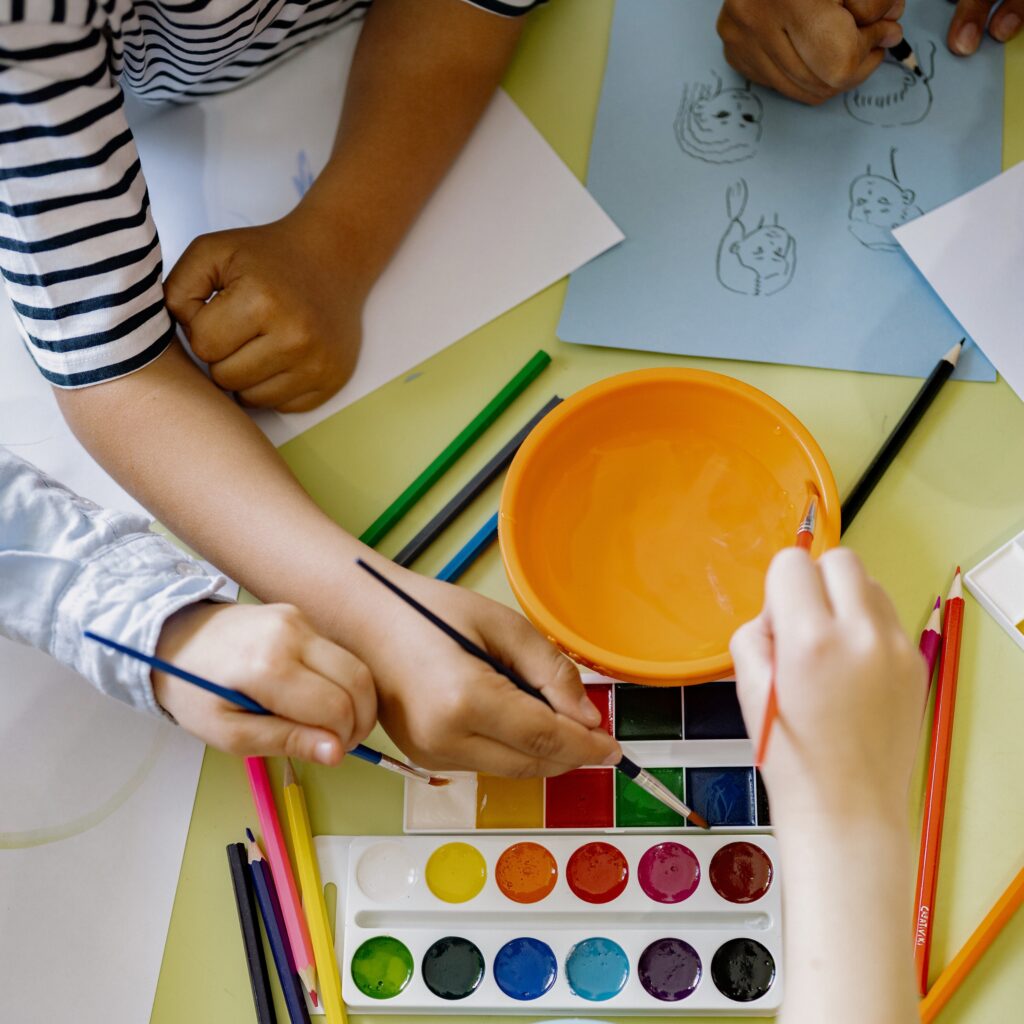
Experiment with different brush types to see what works best for your style. Flat brushes are excellent for creating broad washes, while round brushes provide precision for detailed work.
As you explore, learn fundamental techniques such as wet-on-wet for soft, blended effects, wet-on-dry for sharper edges, and dry brush for adding texture.
Try playing with gradients, washes, and color mixing to better understand how water and pigment interact.
Creating a swatch chart is also helpful for testing each color in your palette, so you know exactly how it will look when applied. Because watercolor is a transparent medium, it’s best to work from light to dark, layering gradually to build depth and detail.
Keep a spare sheet nearby to test colors or practice strokes before committing them to your main piece.
Allow each layer to dry completely before adding another to avoid muddying your colors.
Most importantly, embrace the unpredictable nature of watercolor, unexpected blooms or blends can lead to beautiful, creative results.
Set yourself up in a space with good lighting, ideally natural light, so you can see the true colors and subtle tonal shifts in your work.
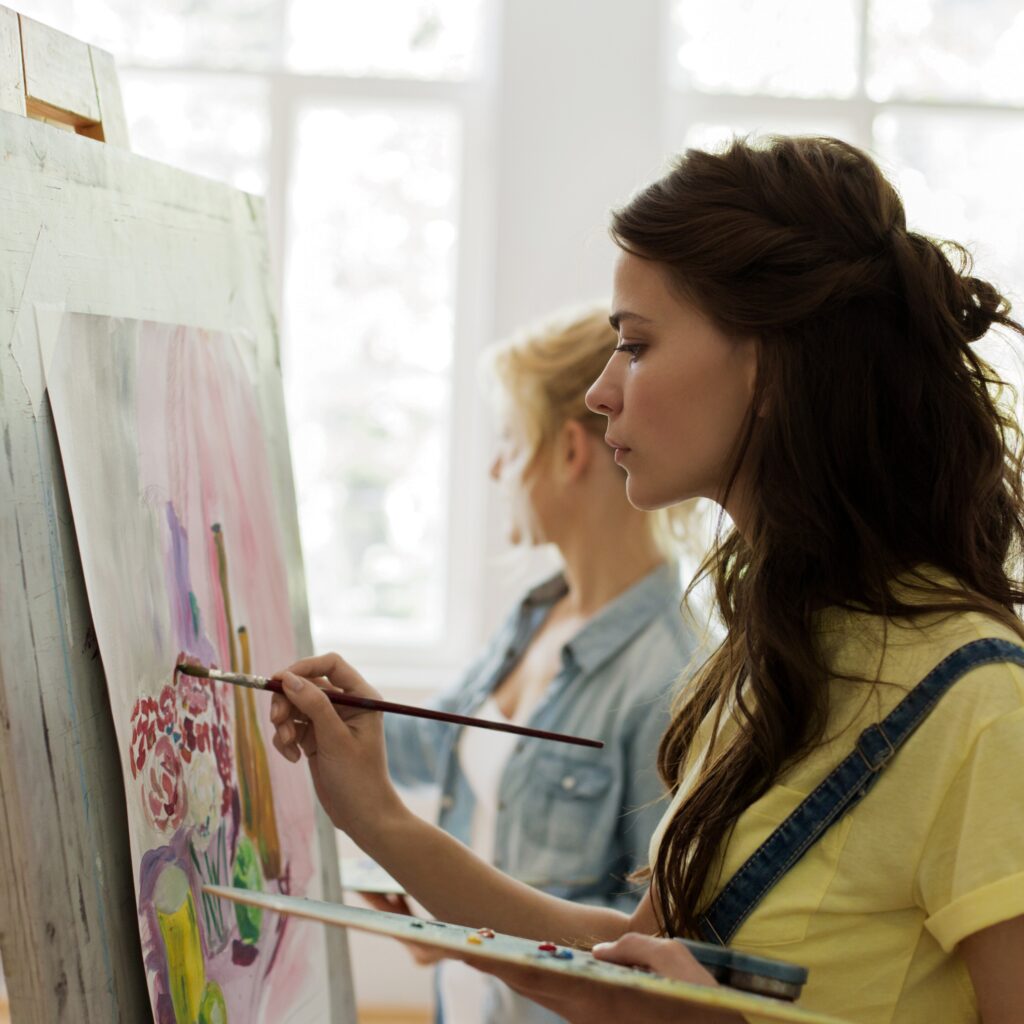
Start small by painting simple subjects like flowers, fruit, or landscapes. This lets you focus on technique without feeling overwhelmed, building your confidence as you progress toward more complex projects.
Most importantly, make it your own. Whether you’re painting for relaxation, creativity, or skill-building, let your personal interests guide you.
Resources
There are plenty of helpful resources to support your painting journey. Online tutorials and art platforms offer an incredible range of learning opportunities for all skill levels. From quick beginner-friendly videos to in-depth lessons on advanced techniques, platforms like YouTube, Skillshare, and other art websites allow you to learn at your own pace while exploring different artistic styles.
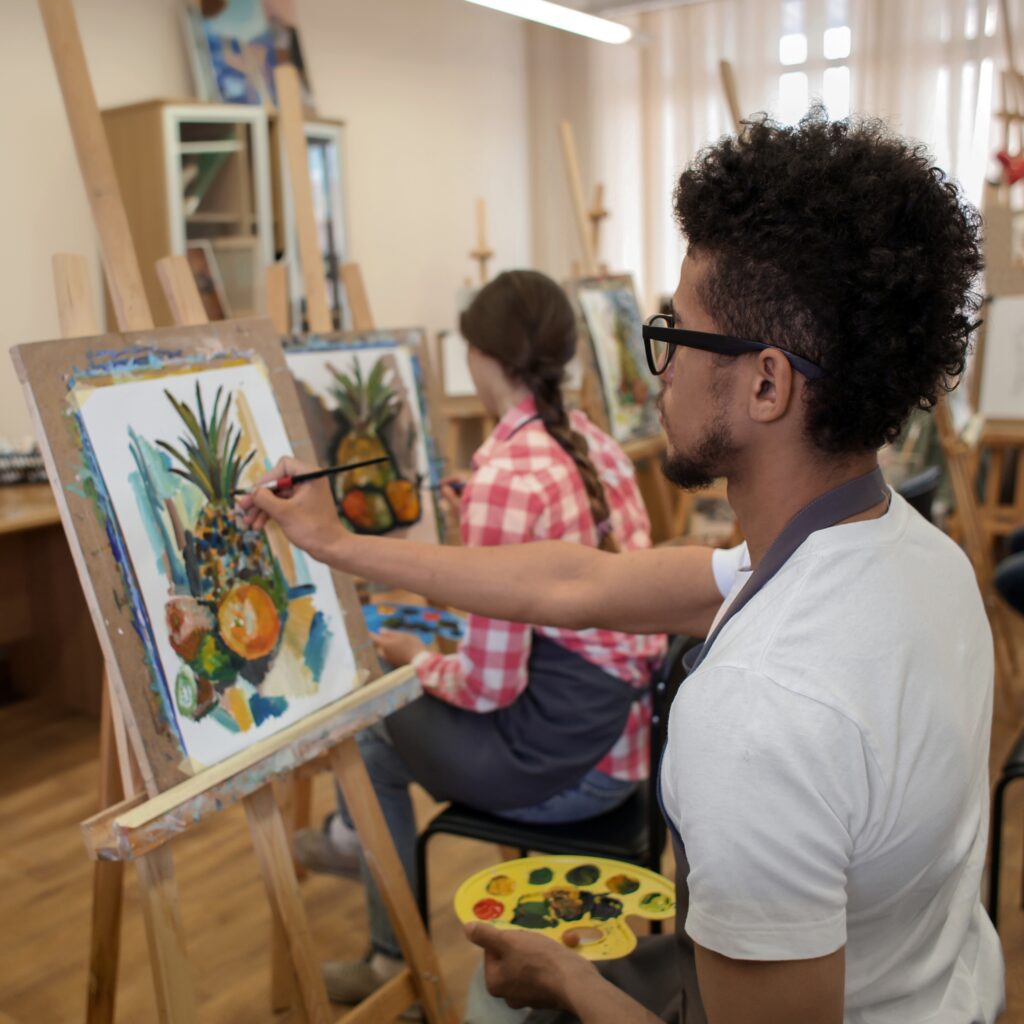
Workshops and art communities, whether in-person or online, provide a supportive environment where you can share your work, receive constructive feedback, and connect with fellow artists.
Local classes often give hands-on guidance, while online groups and forums allow you to engage with watercolor enthusiasts from around the world.
Online inspiration sources such as Pinterest and and Instagram offer endless ideas for subjects, color palettes, and techniques.
These platforms are also great for discovering printable watercolor practice sheets, design templates, and creative challenges to keep your skills fresh.
Books and magazines on watercolor painting provide timeless resources you can reference again and again. They often cover everything from fundamental techniques and color theory to project-based tutorials and artist profiles, helping you deepen both your technical skill and creative vision.
Art supply stores are valuable not only for purchasing materials but also for receiving personalized recommendations. Staff can guide you toward watercolor sets, brushes, and palettes suited to your experience level and budget. Many stores also carry specialty items that you might not find online.
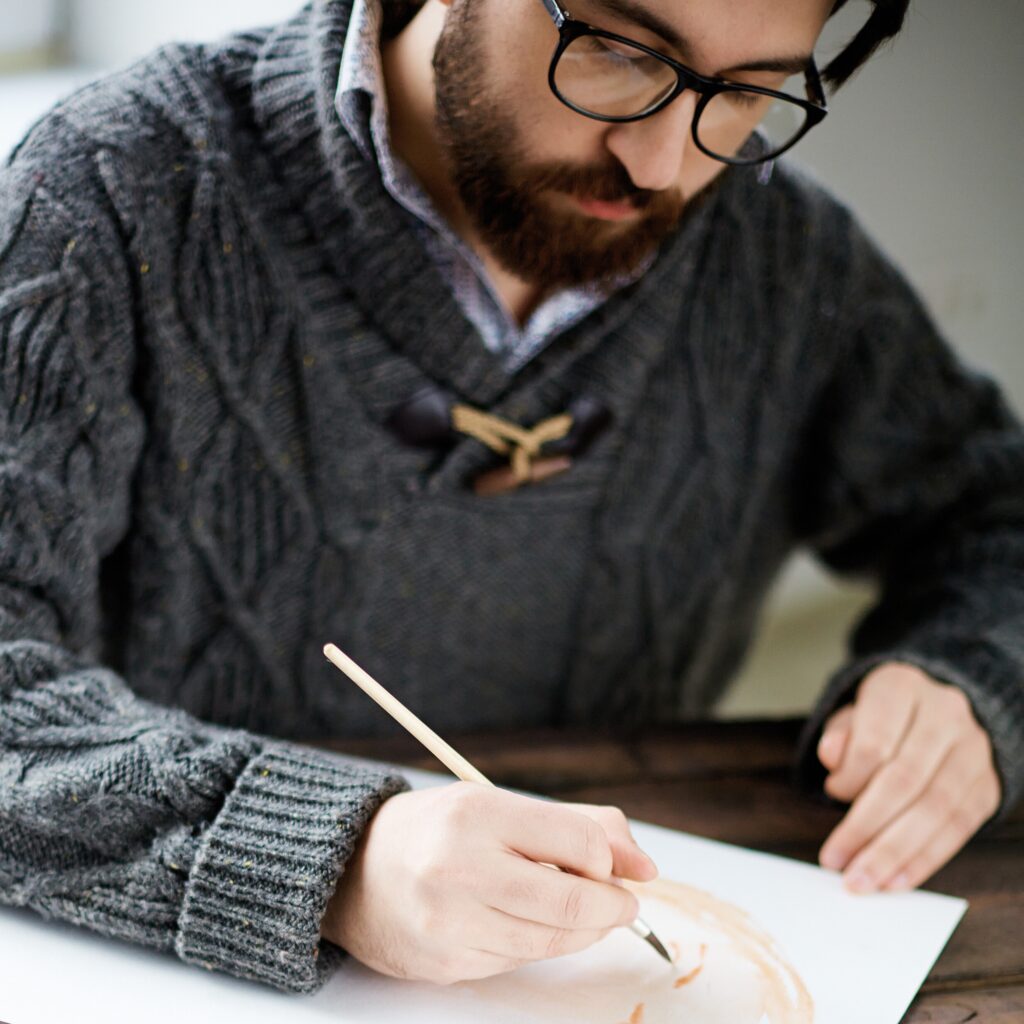
Affordable supplies from online or local retailers make it easy to start painting anywhere inspiration strikes. Many brands offer beginner kits with paints, brushes, and palettes, so you can experiment without a major investment before deciding on higher-quality materials.
Helpful Tips
A few thoughtful habits can make your Watercolor time more comfortable, enjoyable, and productive and help protect your space, your materials, and your creative flow.

Use non-toxic, artist-grade paints, and follow any safety instructions provided on watercolor pencils, masking fluid, or specialty mediums.
Work in a well-ventilated space, especially when using products that may release mild fumes. Keep your water containers stable to prevent spills, and change the water frequently to avoid muddy colors.
Keep your workspace tidy by protecting it with a cover or paper towel, and wear an apron or old clothing to guard against accidental splashes or stains.
Take care of your tools by cleaning brushes thoroughly after each session, avoiding pigment build-up, and never leaving them bristle-down in water, which can damage the tips.
Handle concentrated or liquid watercolors carefully to prevent staining clothes, skin, or furniture.
Good lighting is essential for seeing true colors and subtle tonal changes, natural daylight is ideal. If you’re painting outdoors, secure your supplies against wind or uneven surfaces.
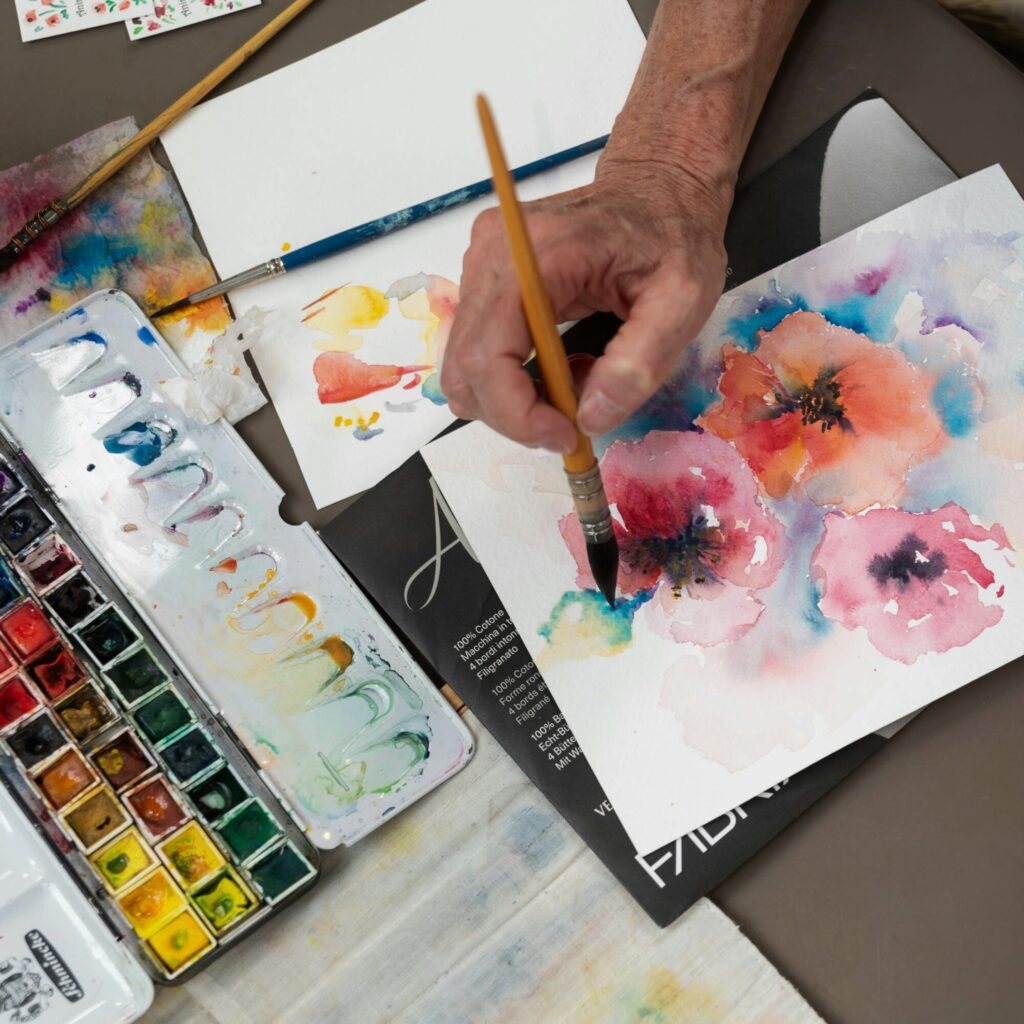
Finally, pace yourself. Watercolor is a medium that rewards patience, allow layers to dry fully before adding more, using the downtime to step back, assess your work, and plan your next strokes. This not only protects the quality of your results but also keeps the process relaxed and enjoyable.
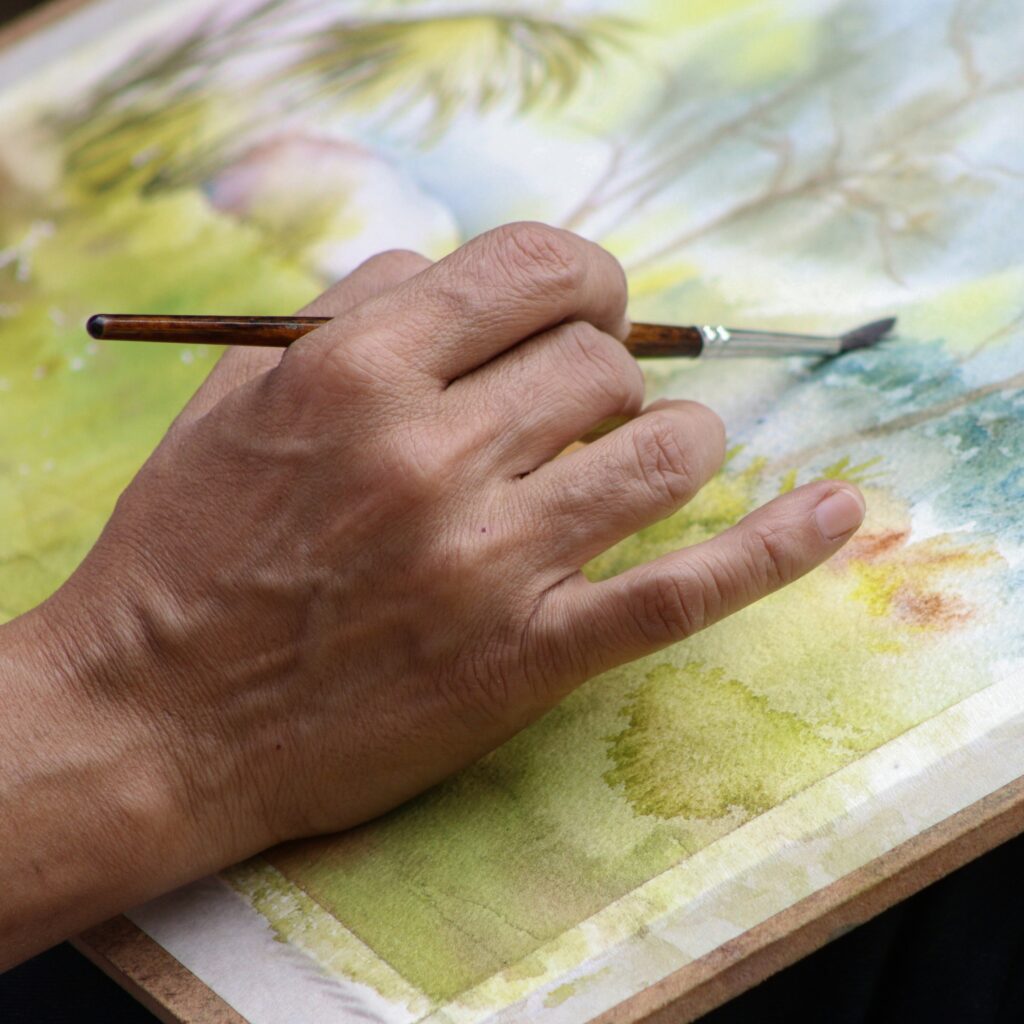
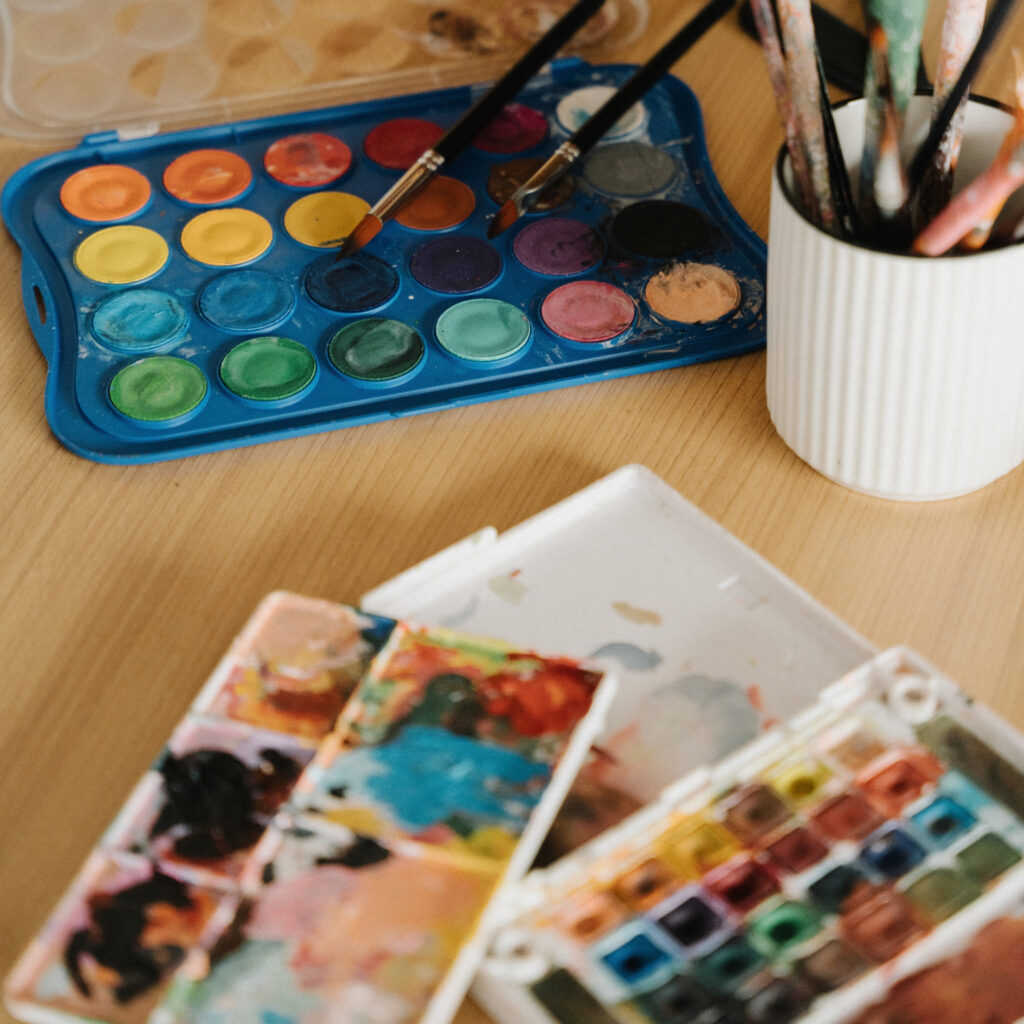
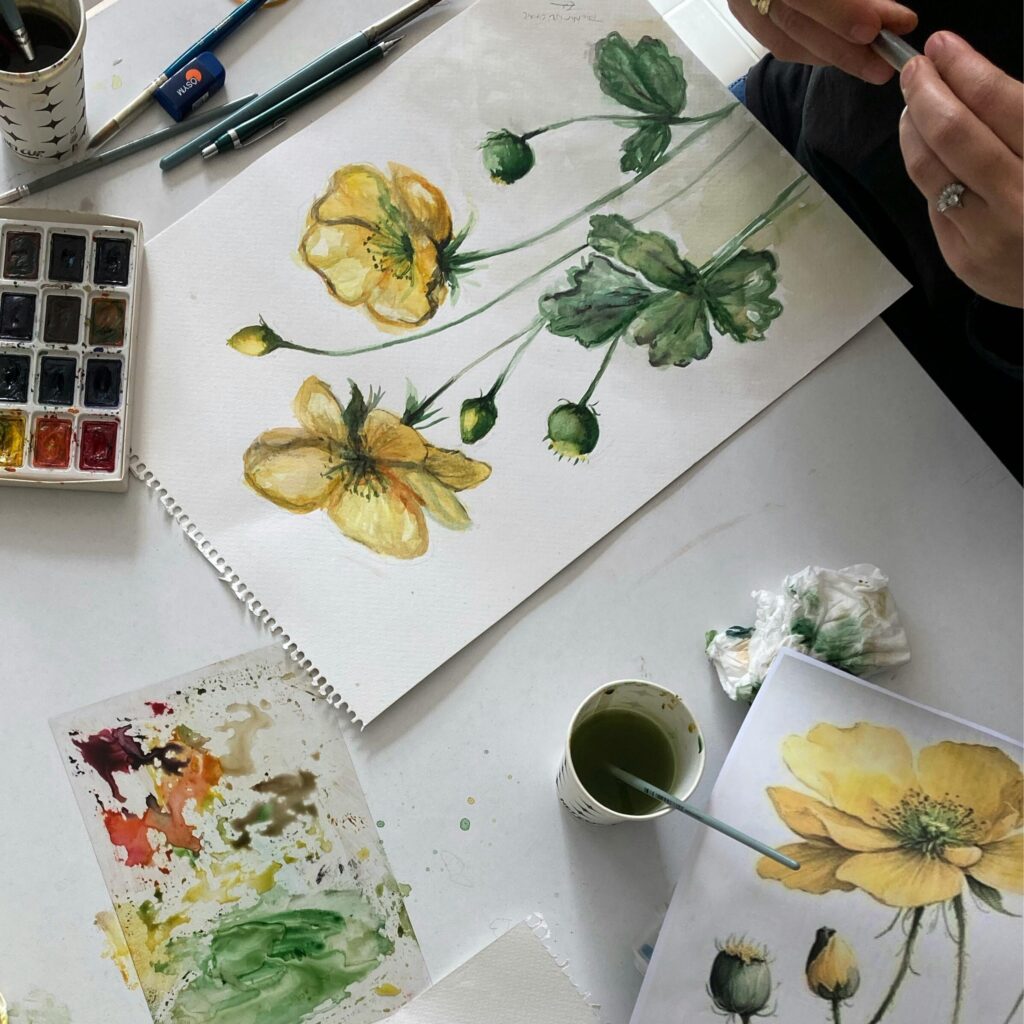
Final Thoughts
Watercolor painting is an inviting and rewarding hobby that offers endless opportunities for creativity and self-expression. The soft and luminous effect of watercolor is uniquely satisfying, and each stroke brings you closer to discovering your own artistic style. Whether you’re painting for relaxation or working toward your next masterpiece, watercolor offers a therapeutic and enjoyable way to express yourself.
What’s your favorite subject to paint with watercolor? Share your thoughts or your favorite tips for watercolor painting in the comments below!
Leave a Reply